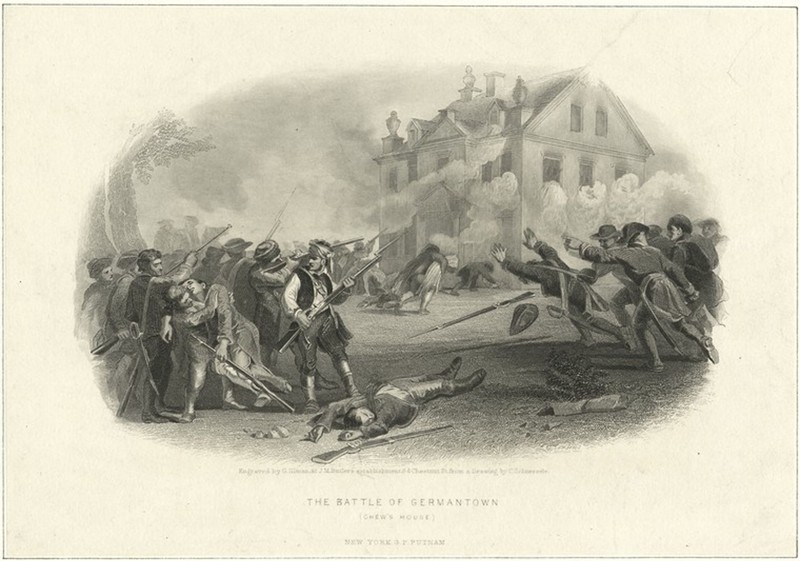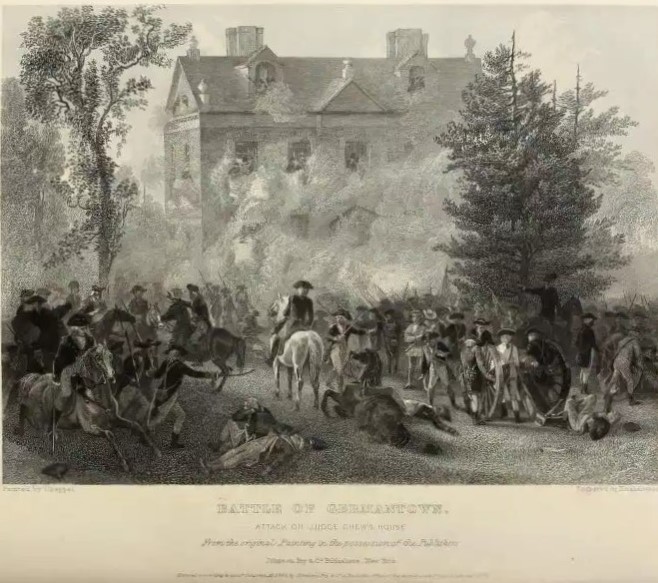Battle of Germantown
Introduction
Text-to-speech Audio
4 October 1777
British Victory
On 26 September 1777, the British captured Philadelphia, the capital of the nascent United States. However, General George Washington refused to quit. When his intelligence indicated that 4,000 British soldiers occupied nearby Germantown, Pennsylvania, he decided to attack. Washington’s plan called for four independent columns simultaneously striking at dawn. The attack required a complex night march over unfamiliar terrain with an amateur Army. This movement would have been difficult to coordinate in any conditions but a thick fog that set in during the attack made it even harder. The two militia columns made little contact while Continental Army troops attacked at different times. Nonetheless, the initial assault on the morning of 4 October 1777, surprised the defenders, causing some British troops to flee the field. After the dense fog confused two American divisions causing them to fire into each other, and a third division exhausted its ammunition, General Charles, Lord Cornwallis counterattacked, forcing the Continental Army to retreat.
Images
The Battle of Germantown

"Battle of Germantown: Attack on Judge Chew's House"

Backstory and Context
Author-Uploaded Audio
Listen to a narration of this entry's description by Kenna Felix.
Text-to-speech Audio
After Germantown Howe once again concentrated his army and moved to confront Washington at Whitemarsh, hoping to lure the Virginian into a rash attack. The ploy failed, so he withdrew to winter quarters in Philadelphia without giving battle. Washington chose the site for his own winter quarters at a place called Valley Forge, twenty miles northwest of the city. Howe had gained his objective, but it proved of no lasting value to him. Congress fled west to York, Pennsylvania. No swarms of Loyalists rallied to the British standards. And Howe had left Burgoyne to lose a whole British army in the north.
Sources
Boatner, Mark Mayo, Encyclopedia of the American Revolution, Stackpole Books, 1994.
Ferling, John, Almost a Miracle: The American Victory in the War of Independence, Oxford University Press, 2007.
Ferling, John, Whirlwind: The American Revolution and the War the Won It, Bloomsbury Publishing, 2015.
Middlekauff, Robert, The Glorious Cause: The American Revolution, 1763-1789. Oxford University Press, 2005.
Philbrick, Nathaniel, Valiant Ambition: George Washington, Benedict Arnold, and the Fate of the American Revolution, Penguin Books, 2017.
Savas, Theodore P. & J. David. A Guide to the Battles of the American Revolution, New York: Savas Beatie LLC, 2006.
Stewart, Richard W., ed. American Military History. 2nd ed. Vol. 1. American Historical Series. Washington, D.C.: Center of Military History, United States Army, 2009.
Tucker, Spencer, ed. American Revolution: The Definitive Encyclopedia and the Document Collection (5 volumes), ABC-CLIO Publishing, 2018.
The Miriam and Ira D. Wallach Division of Art, Prints and Photographs: Print Collection, The New York Public Library
Dawson, Henry B. Battles of the United States, by sea and land, vol. 1, 1858. Johnson, Fry and Company. Page 322-323.
